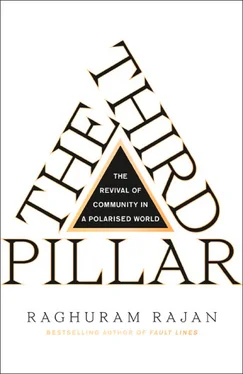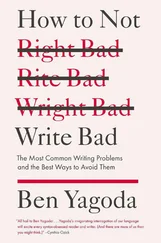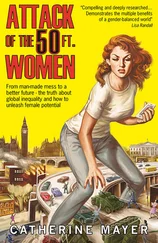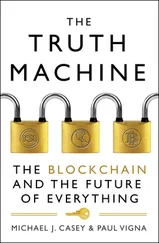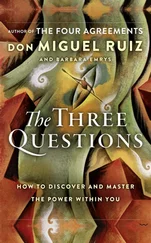The net effect of a freer land market was that less-productive peasants had an incentive to sell or were strong-armed into doing so, often to larger landowners who had surplus cash, and who could farm the combined land more profitably. Land holdings became more concentrated in fewer hands but agriculture also became more productive. Unfortunately, a number of peasants were forced into marginal holdings or entirely out of the manorial community as they sold, or were evicted from, the land that tied them to it. At the bottom, holdings became smaller as the size of the peasant family grew. As the small peasant’s holdings were subdivided and average incomes fell, a growing number of second and third sons had to fend for themselves outside the feudal manor. The expansion of the market, as is sometimes its wont, resulted in growing inequality.
These were therefore extremely difficult times for many European peasants, especially those who no longer had the protection of the manorial community. Average incomes were not only barely above the level needed for subsistence but also were highly variable over time. 12The failure of a harvest or the death of livestock were not infrequent events. One estimate suggests that even the relatively wealthy English peasant could expect to face serious calamity every thirteen years. 13Some work did open up outside farming, especially in the growing towns where merchants and artisans prospered, but it was rarely enough.
Despite their low and highly variable incomes, death by starvation was surprisingly rare among the peasantry. The reason was simple: informal community support within the manor for those who still belonged to one, and formal charitable institutions run by the Church, such as almshouses, leper houses, pilgrim centers, educational institutions, and monastic hospitals, for those outside the manor, constituted a social safety net. Harder times for the poor explain why the Church became more aggressive in its fight against usury. 14
Usury prohibitions limited the profits that anyone with excess wealth could make by lending to those in difficulty. At the same time, a lender faced a loss of social status and even excommunication if he was condemned as a usurer. Perhaps the businessman was willing to take this risk when young. As he grew older and came closer to the feared inevitable meeting with his Maker, the graphic pictures painted by the clergy of the torments that awaited him in hell were an increasing source of worry. The prohibition on usury thus helped channel the wealth of the rich away from making usurious consumption loans and toward helping poorer unfortunates. Such help could be given informally, or formally through charitable donations to the Church. As in the Hebrew tribes, the prohibition on usury suppressed the market in favour of the community. Thus as the commercialisation of agriculture created greater numbers of the poor, the Church took their side by restricting the debt market.
The Church’s actions were also not unrelated to the political battles it was fighting at that time with the secular authorities. The reforms initiated by Pope Gregory VII in 1075 – the so-called Papal Revolution – attempted to separate the Church from the feudal hierarchy, especially the domination of the Holy Roman Emperor. 15The details of the conflict, which culminated in the victory of the Church, need not concern us but some aspects are important. In order to attract support for their cause, Church scholars systematised and rationalised the Church’s vast legal traditions. A comprehensive body of canon law emerged, which could now guide ecclesiastical courts, and which helped reaffirm that all Catholic authorities, including the powerful emperor, were constrained by a higher, principle-based, law. Furthermore, in response to competition from the now-more-reliable ecclesiastical courts governed by canon law, feudal rulers developed their own legal system.
Both the Church and the ruler competed to offer better justice to attract plaintiffs into their courts. Since the poor and the powerless benefited disproportionately from the law, courts consequently became more sympathetic to their problems. Better-enforced usury prohibitions became one element of that competition.
The Church’s actions thus had mixed effects on the poor peasant. The Church may have helped make property more alienable in order to expand its own wealth. 16Easier alienability allowed feudal lords to move unproductive peasants off their land, rendering them destitute. However, the Church was probably also motivated by the welfare of these very same peasants and concerned about the stability of the community when it banned usury and exploitative market transactions. And it did use some of the wealth it accumulated to provide charity to the destitute.
The Intellectual Support for the Ban on Usury
The Church could appeal to a long line of thinkers, past and present, for support for the ban on usury. The Greek philosopher Aristotle, who was being rediscovered in this period, was firmly against interest on loans. He saw the production of goods to satisfy physical wants such as food and clothing as useful economic activity. Farming, the raising of livestock, and manufacturing were all productive. In contrast, trade, which simply exchanged goods for one another; hire, which lent out goods for money; and usury, which lent out money for money, produced nothing that satisfied physical wants. Of the three, ‘The most hated sort, and with the greatest reason, is usury, which makes a gain out of money itself, and not from its natural use of it. For money was intended to be used in exchange, but not to increase at interest.’ 17
St Augustine, a guiding light of the early Church, similarly warned about the three sins of fallen men: the lust for power, sexual lust, and the lust for money. Of these, he was most ambivalent about the lust for power, which if accompanied by a sense of civic duty and honor, could protect the community against external attack. 18He also discussed in his startlingly frank Confessions how his private desires such as sex – as a young man, he was sexually active, and later, he lived with a mistress who bore him a son – came in the way of his relationship with God. Here too he seemed to be ambiguous, if not understanding. About the lust for money, though, he was clear in his condemnation.
Drawing on such sources, Church scholars in the Middle Ages concluded that trade or enterprise was necessary but perilous to the soul. The businessman could always be tempted to hanker after excess profit by charging more than the just price – the price that provided adequate income for the seller to maintain his station in life. This constituted avarice, a deadly sin. Working hard to enhance profits was clearly not in accordance with medieval thinking. Worse still was finance, which ‘if not immoral, was at best sordid, at worst disreputable.’ 19These strongly Aristotelian attitudes, which still dominate many societies today, reflected a suspicion of the middleman. They were thought to make money not by adding intrinsic value to the traded item, but by moving goods or money to areas of shortage, or even, many believed, by creating the shortage in the first place.
WHY THE CHURCH BECAME MORE TOLERANT OF USURY
Important developments eventually moderated Church hostility toward business and finance in Europe. The Black Death, a plague more deadly than any before in Europe’s recorded history, did much to shake the distribution of income and social structures. There were now relatively fewer poor to protect. Moreover, commercial activity also picked up; the development of new military technologies led to larger states, and therefore larger, safer, internal markets. There was consequently more opportunity to trade. Lending to businesses to finance trade increased. With the state also demanding loans to finance its larger spending, lending did not seem so exploitative – it was no longer primarily consumption loans to the poor untutored peasant but rather loans to financially sophisticated borrowers (as the modern parlance goes). Furthermore, it was less important for the Church to protect the borrower as more of the wealthy competed to lend. Also, the Church itself became an important usurer as it lent out the enormous wealth it had accumulated following the Papal Revolution.
Читать дальше
